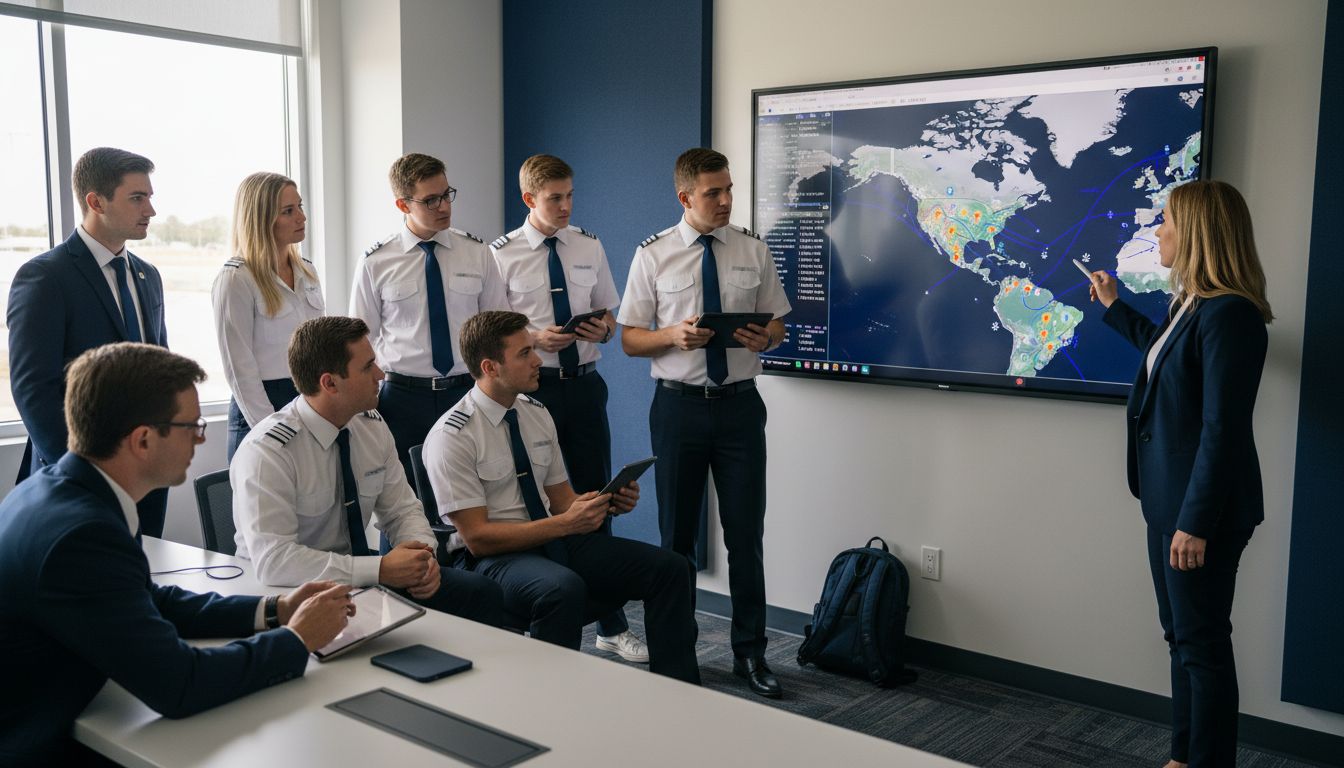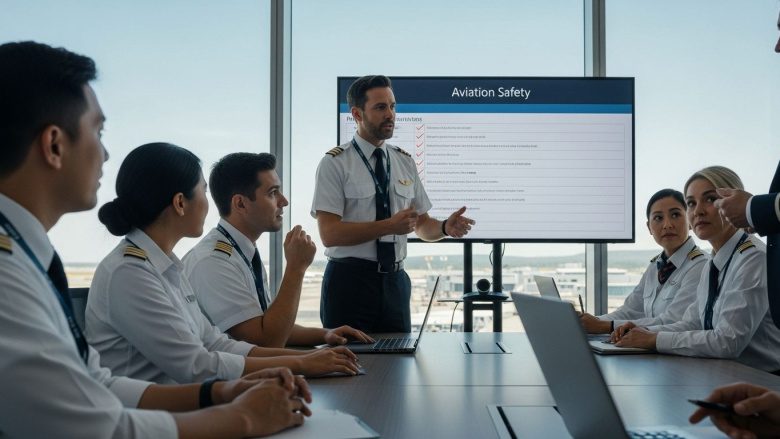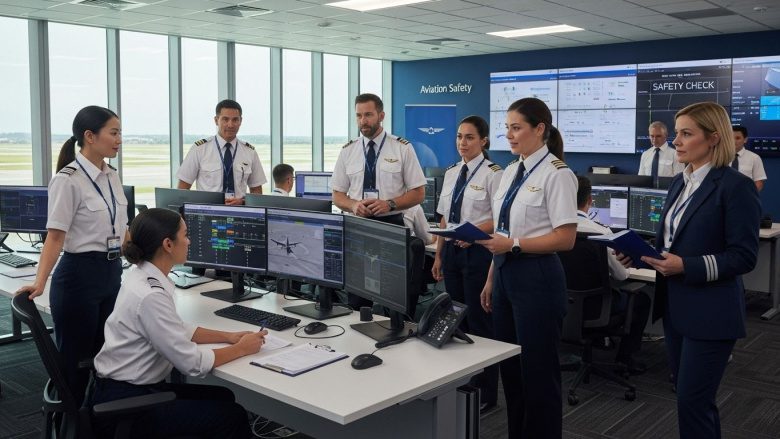Aviation experts know that unsafe weather plays a role in about 14 percent of general aviation incidents, according to the European Union Aviation Safety Agency. Weather shapes every flight, affecting everything from route planning to real-time decisions in the cockpit. Good meteorological knowledge gives pilots the power to avoid hazards, read crucial weather data, and make smart choices that protect everyone on board.
Table of Contents
- Meteorology Basics For Pilots
- Interpreting Aviation Weather Reports
- Weather Hazards And Flight Safety
- Regulations And Easa Weather Standards
- Pilot Weather Decision‑Making Processes
Key Takeaways
| Point | Details |
|---|---|
| Importance of Meteorological Knowledge | Pilots must possess a robust understanding of weather phenomena to enhance flight safety and make informed operational decisions. |
| Effective Interpretation of Weather Reports | Mastery of METAR, TAF, SIGMET, and AIRMET formats is essential for pilots to properly assess and adapt to changing atmospheric conditions. |
| Mitigating Weather Hazards | Continuous awareness and advanced decision-making strategies are crucial for handling severe weather risks during flight operations. |
| Regulatory Standards | EASA’s regulations provide critical benchmarks for weather-related decision-making, ensuring pilots adhere to safety protocols amidst complex meteorological conditions. |
Meteorology Basics for Pilots
Meteorological knowledge represents a critical skill set for aviation professionals, with weather phenomena directly impacting flight safety and operational decisions. According to the European Union Aviation Safety Agency (EASA), weather contributes to approximately 14% of general aviation incidents, highlighting the paramount importance of comprehensive meteorological understanding for pilots.
Pilots must develop a robust comprehension of atmospheric conditions, including wind patterns, temperature variations, pressure systems, and potential hazards such as thunderstorms, turbulence, and icing. Understanding these elements allows pilots to make informed decisions about route planning, altitude selection, and potential weather-related risks. Learn more about weather interpretation in our guide on how to read METARs.
Key meteorological competencies for pilots include:
- Interpreting weather charts and satellite imagery
- Understanding atmospheric dynamics and cloud formations
- Recognizing potential severe weather developments
- Comprehending meteorological abbreviations and coding systems
- Assessing visibility and precipitation conditions
Successful pilots integrate meteorological knowledge with practical decision-making skills, transforming theoretical understanding into real-world safety strategies.
 Weather represents a dynamic, complex environment that demands continuous learning and adaptive thinking from aviation professionals.
Weather represents a dynamic, complex environment that demands continuous learning and adaptive thinking from aviation professionals.
Interpreting Aviation Weather Reports
Interpreting aviation weather reports is a fundamental skill that requires precision, understanding, and systematic analysis. According to the European Aviation Safety Agency (EASA), weather reporting represents a critical component of pilot theoretical knowledge, integrated directly into professional examination frameworks. Explore our comprehensive guide on studying meteorology for pilots to develop a robust understanding of these essential skills.
Aviation weather reports typically include several standardized formats that provide crucial information for flight planning and operational decision-making.
Here’s a summary comparing key aviation weather report formats:
| Report Type | Purpose | Main Contents | Usage Frequency |
|---|---|---|---|
| METAR | Actual weather observations | Wind Visibility Temperature Clouds Weather phenomena |
Hourly During flight |
| TAF | Aerodrome weather forecasts | Forecasted wind Visibility Precipitation Cloud coverage |
Every 6 or 24 hours Pre-flight |
| SIGMET | Significant weather warnings | Severe turbulence Thunderstorms Icing Volcanic ash |
As required In real time |
| AIRMET | Warnings for light aircraft | Moderate turbulence Mountain waves IFR conditions |
As required Usually in-flight |
| METARs (Meteorological Aerodrome Reports) and TAFs (Terminal Aerodrome Forecasts) are the primary communication tools, presenting comprehensive data about: |
- Current atmospheric conditions
- Wind speed and direction
- Visibility ranges
- Temperature and dew point
- Precipitation and cloud coverage
- Potential atmospheric hazards
Professional pilots must develop the ability to rapidly decode these complex information systems, transforming technical meteorological language into actionable insights. The EASA’s Weather Information to Pilots Strategy emphasizes the importance of intuitive, standardized graphics that enable pilots to quickly assess and respond to changing environmental conditions, ensuring safe and efficient flight operations.
Weather Hazards and Flight Safety
Weather-related hazards represent a critical challenge in aviation safety, with potentially life-threatening consequences for flight operations. According to the European Aviation Safety Agency (EASA), weather-related accidents are particularly prevalent in general aviation, accounting for a significant percentage of incidents involving dangerous conditions like turbulence, thunderstorms, and icing. Learn more about comprehensive aviation safety practices.
Pilots must develop comprehensive strategies to mitigate these risks, which include:
- Maintaining constant weather awareness
- Understanding advanced meteorological forecasting techniques
- Utilizing on-board sensor technologies
- Implementing robust pre-flight risk assessment protocols
- Developing adaptive decision-making skills during challenging atmospheric conditions
EASA’s strategic recommendations emphasize leveraging technological solutions like high-resolution forecasts and Electronic Flight Bag (EFB) systems to enhance pilots’ situational awareness. These advanced tools enable real-time meteorological data interpretation, helping pilots make informed decisions about route modifications, altitude adjustments, and potential flight cancellations when confronting severe weather challenges. The key to survival lies in proactive risk management and continuous learning about atmospheric dynamics and their potential impact on flight safety.
Regulations and EASA Weather Standards
EASA’s regulatory framework for weather standards represents a comprehensive approach to ensuring aviation safety across European airspaces. According to the Easy Access Rules for Air Operations (Revision 17, February 2022), the agency has implemented rigorous all-weather operations standards that provide detailed guidance for pilots navigating complex meteorological conditions. Explore our guide on aviation safety management to understand the broader context of these critical regulations.
Key regulatory components for weather standards include:
- Minimum visibility requirements
- Precise wind speed and direction tolerances
- Cloud cover and ceiling height specifications
- Runway visual range measurements
- Comprehensive meteorological reporting protocols
- Mandatory equipment standards for weather assessment
These regulations are not merely bureaucratic guidelines but essential safety mechanisms designed to protect flight crews and passengers. By establishing clear, scientifically-derived meteorological benchmarks, EASA ensures that airlines and individual pilots have unambiguous standards for operational decision-making. The standards continuously evolve, integrating technological advancements and lessons learned from extensive aviation research to maintain the highest possible safety standards in an increasingly complex global aviation environment.
Pilot Weather Decision‑Making Processes
Weather decision-making represents a critical skill that distinguishes professional pilots from novices. According to EASA’s safety recommendations, effective meteorological assessment requires a systematic approach that combines technological tools, comprehensive training, and nuanced situational awareness. Understand the critical human factors in aviation decision-making to enhance your strategic weather evaluation skills.
Key components of robust weather decision-making include:
- Comprehensive pre-flight weather briefing analysis
- Real-time weather information assessment
- Understanding probabilistic weather risk scenarios
- Utilizing Electronic Flight Bag (EFB) technologies
- Developing adaptive risk management strategies
- Implementing simulator-based weather scenario training
EASA’s safety campaigns emphasize the importance of continuous education and simulation-based training to improve pilot judgment during challenging meteorological conditions. The goal is not just identifying weather risks, but developing a dynamic decision-making process that prioritizes crew and passenger safety through proactive risk mitigation, technological integration, and continuous learning about atmospheric dynamics and potential flight hazards.
Master Meteorology Skills with VictorOne’s Expert Aviation Training
Understanding complex weather patterns and making swift decisions based on weather reports can be overwhelming. This article highlights the vital role of meteorological knowledge in keeping flights safe, from interpreting METARs and TAFs to managing weather hazards like turbulence and icing. If you aspire to develop confidence in these skills and transform technical meteorology theory into practical decision-making, you need structured, professional guidance.
Take control of your aviation future by exploring the Academy – VictorOne where you can access EASA-approved courses tailored to enhance your weather interpretation and overall pilot expertise.

Don’t let weather uncertainties ground your ambitions. Visit VictorOne.eu today and enrol in courses designed to boost your meteorology understanding and decision-making ability. Start training now to become the confident pilot who masters every challenge the skies present.
Frequently Asked Questions
What are METARs and how are they important for pilots?
METARs are Meteorological Aerodrome Reports that provide actual weather observations, including wind speed, visibility, temperature, cloud coverage, and potential weather phenomena. Pilots use METARs for real-time weather data to make informed flight decisions.
How do pilots interpret TAFs for flight planning?
TAFs, or Terminal Aerodrome Forecasts, are aerodrome weather forecasts that detail forecasted wind, visibility, precipitation, and cloud coverage over a specified period. Pilots analyze TAFs to anticipate weather conditions during the flight and to make route decisions.
What key weather hazards should pilots be aware of?
Pilots should be aware of various weather hazards, including turbulence, thunderstorms, icing, and low visibility conditions. Understanding these hazards is essential for maintaining flight safety and making informed operational decisions.
How can technology enhance a pilot’s weather decision-making capabilities?
Technology, such as Electronic Flight Bag (EFB) systems, provides real-time meteorological data and high-resolution forecasts, enhancing pilots’ situational awareness. These tools enable better risk management and informed decision-making regarding route adjustments and altitude selections.


